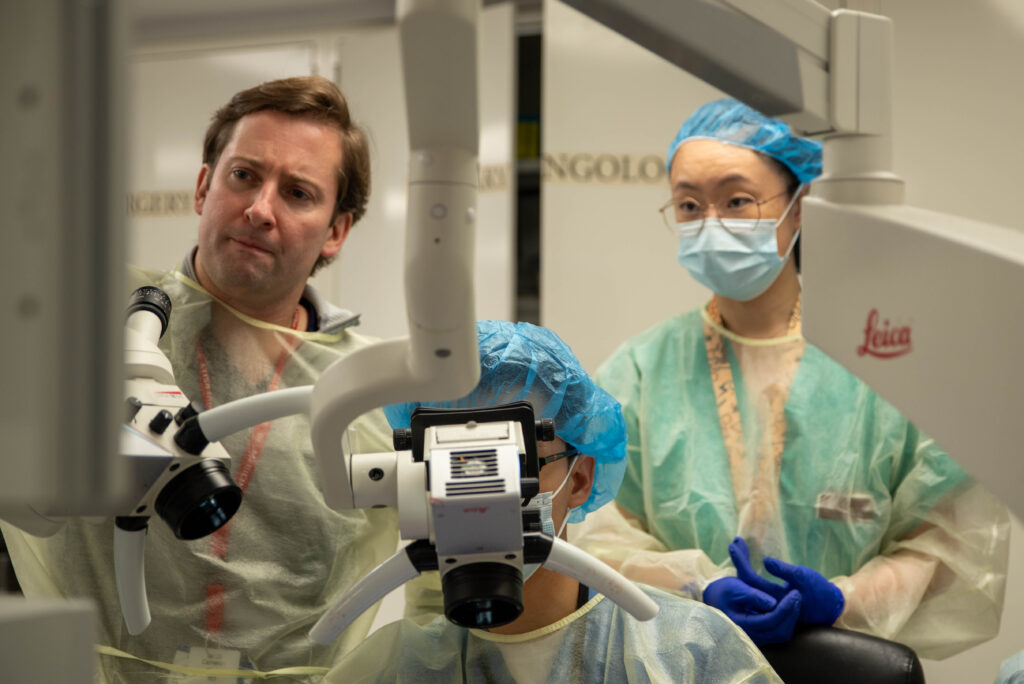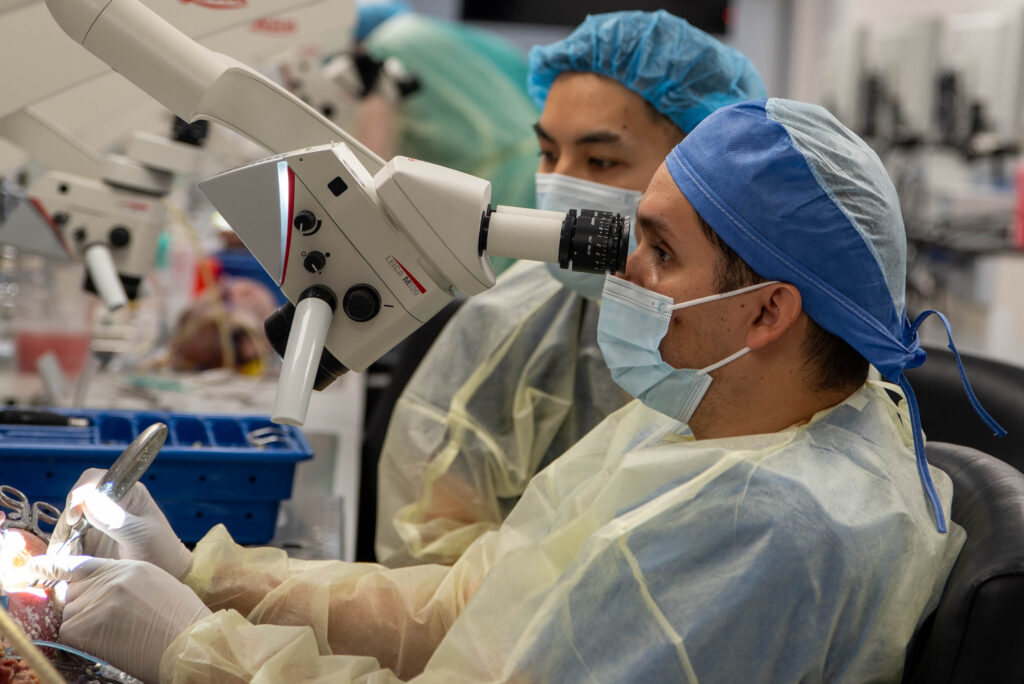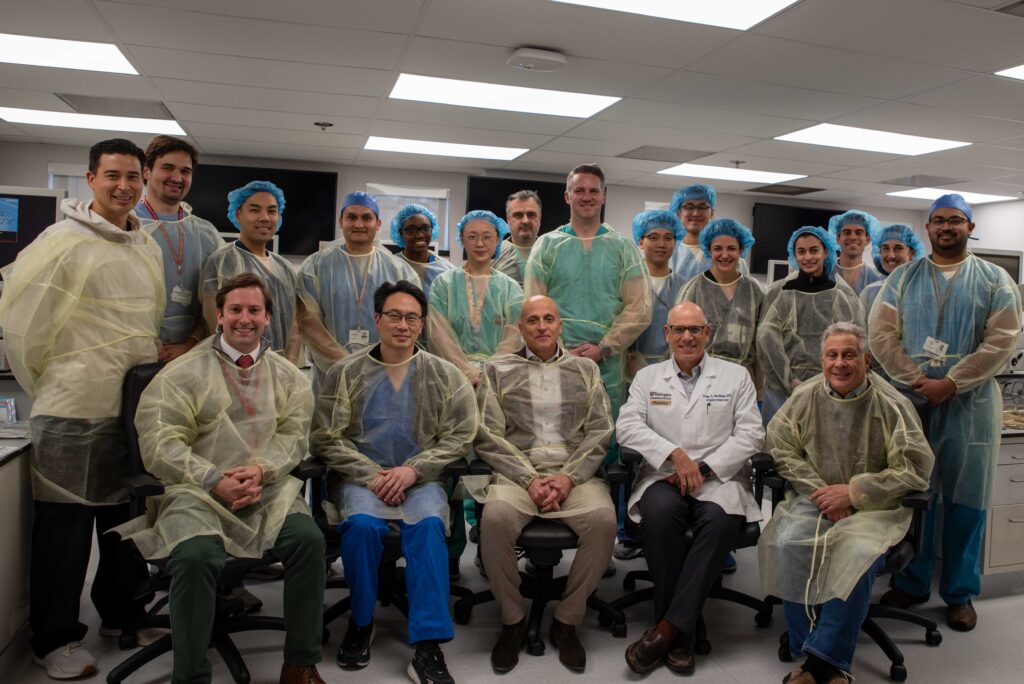Mentored by leading neurotologists and neurosurgeons, Washington University residents recently learned techniques to remove tumors from the lateral skull base, specifically vestibular schwannomas, which are also known as acoustic neuromas.
Working in Washington University’s state-of-the art multidisciplinary surgical simulation lab, residents from the departments of otolaryngology and neurosurgery practiced surgical approaches to removing these non-cancerous slow-growing tumors that develop on the vestibular nerve. In the operating room, neurosurgeons and neurotologists work closely together on these surgeries, so the course was an important introduction to collaborative surgical efforts.

Visiting neurosurgeon Mustafa Buskaya, MD, Robert J. Dempsey Professor of Neurological Surgery at the University of Wisconsin School of Medicine & Public Health, offered a lecture on vestibular schwannoma approaches and also assisted residents in the lab.
Hosted by Washington University School of Medicine Dec. 2, the event was supported by an educational grant from global medical technology company Stryker. Participating faculty from the departments of Neurosurgery and Otolaryngology at Washington University included:

- Albert Kim, MD, PhD (co-director)
- Cameron Wick, MD (co-director)
- Craig Buchman, MD
- Ryan Cleary, MD (neurosurgery fellow)
- Nedim Durakovic, MD
- Jacques A. Herzog, MD
- Matthew Shew, MD
- Miriam Smetak, MD (neurotology fellow)
- Ananth Vellimana, MD
Surgery for a vestibular schwannoma may involve removing all or part of the tumor, and the surgical approach depends on tumor size and location as well as residual hearing. Residents gained experience with all three surgical approaches:
- The translabyrinthine approach is the most direct route to resect a tumor and provides access to the skull base through the temporal bone. This approach limits the need for brain retraction and is generally used for tumors larger than 3 centimeters or when hearing has already been lost in the affected ear.
- The retrosigmoid approach involves removing a portion of the occipital bone at the back of the skull to access tumors in the posterior cranial fossa. This approach can be used for removing tumors of any size and offers some chance for hearing preservation.
- The middle fossa approach is an option for removing small tumors inside the internal auditory canal, the bony narrow passageway from the brain to the inner ear. This approach is recommended for patients with smaller tumors and good hearing in the affected ear.
Course co-director Cameron Wick, MD, was pleased with the collaborative experience the course provided.
“The combined neurosurgery-neurotology lab provides a unique multi-disciplinary learning experience for our trainees,” he said. “This is a real example of simulating how we perform in the operating room and how everyone benefits from each other’s expertise. We are very fortunate at Washington University to have such a broad collaborative relationship with our neurosurgery colleagues that positively impact research, education and patient care.”
